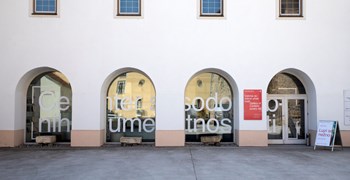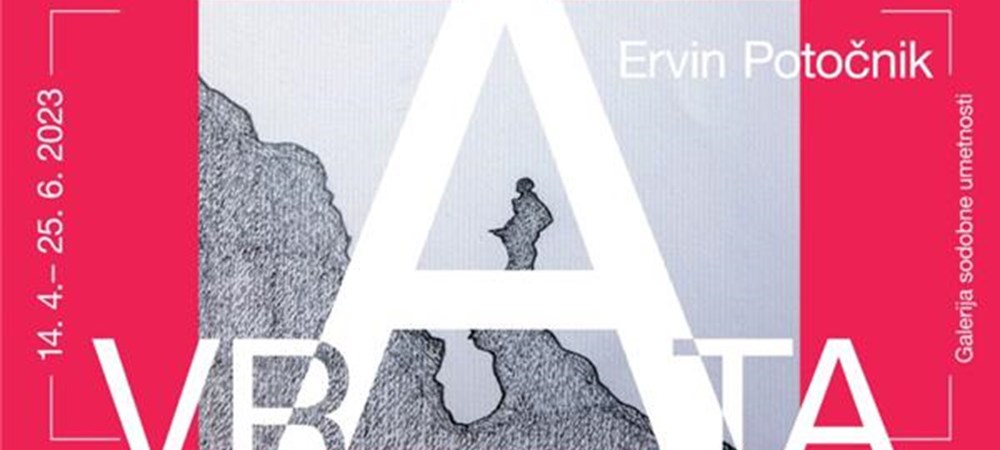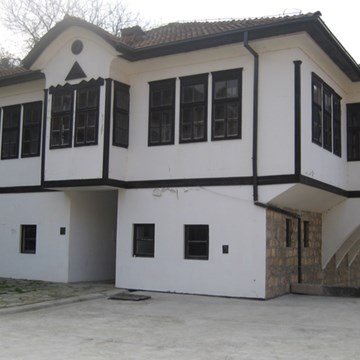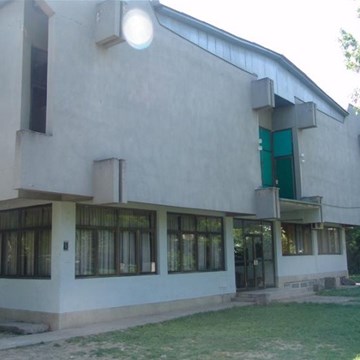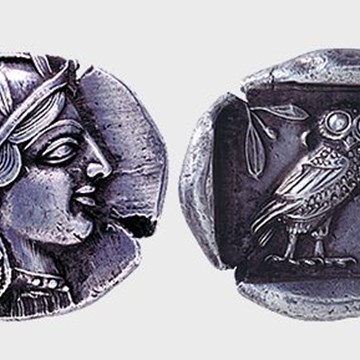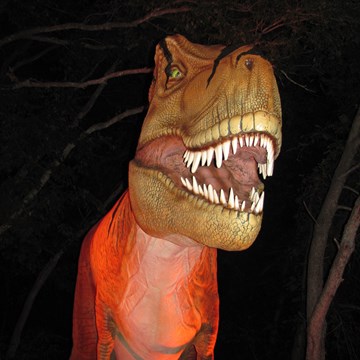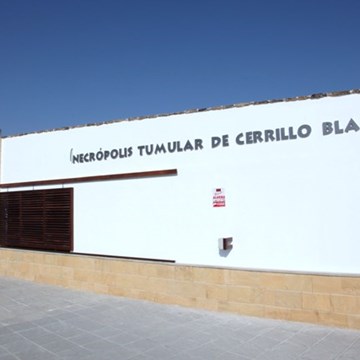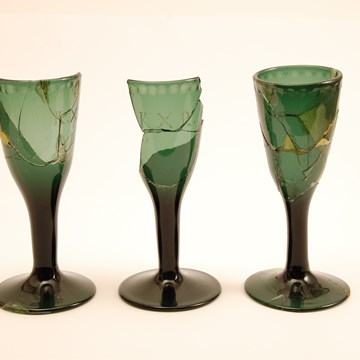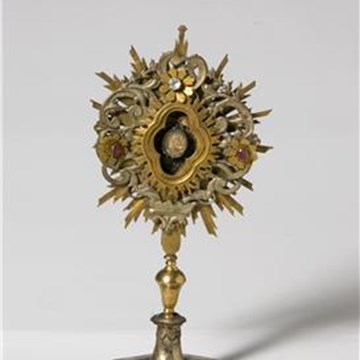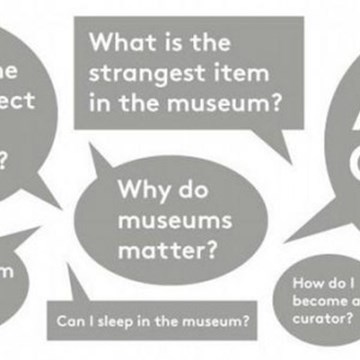Ervin Potočnik: The Door
The exhibition The Door by the sculptor and painter Ervin Potočnik from Celje at the Gallery of Contemporary Art is conceived as an overview exhibition despite the limited selection of works. It includes individual rare surviving works from his sculptural oeuvre as well as a selection of paintings and drawings created – after the artist’s hiatus of several years – in the last five years of his renewed intensive work. Among the sculptures on display (the oldest dates back to the 1990s), the monumental works from the exhibitions at the Museum of Too Modern Art in Spodnji Hotič (2006), the Gallery of Contemporary Art (Celje, 2008) and the Božidar Jakac Gallery (Kostanjevica na Krki, 2009), which represent one of the highlights of his always distinctly individual creative language and with which he visibly established himself among the important representatives of Slovenian sculpture, are unfortunately missing. They are represented only by an enlarged photograph of one of them, as the artist was forced to destroy them because of their size after losing his sculpture studio. The sculptures on display are placed in a dialogue with his more recent paintings and series of paintings, and both form a dialogue with the numerous drawings (of the more than 2,000 drawings currently on display, a selection of around 220 is shown), which run throughout the exhibition in the form of compositions as emphasised spaces of the innermost and the spontaneous. They are populated by forms that are also found in the paintings and have been created continuously, night after night, almost as a kind of automatism and “necessity” over the last year and a half, drawing from all kinds of sources of the conscious and the unconscious. The juxtaposition of all three mediums as well as different time periods, not chronology, results from two constancies in Potočnik’s work: an interest in the tangibility of the material used and the introduction of the symbolically archetypal, intuitive and transcendent, a reflection of his personal worldview, which in its equation of immanence and transcendence comes very close to a pantheistic philosophical view.
With the symbolism of life and creation, the origin of everything created and the new or perfect state that is both beginning and end, a white stone egg stands on the playful curves of an iron base right at the beginning of the exhibition as an introduction to it. In its purest form, the work with the egg (the symbol of the egg is present in many cultures and beliefs) seems to sum up the artist’s inward-looking artistic language and his meditation on the identity of spirit and nature, truth and intuitive knowledge. With its precise and evenly grooved oval surface and its combination of stone and iron as well as light and dark, the work (from 2006) also brings forth the artist’s fascination with material, texture and structure, as well as contrast, which we encounter to a greater or lesser extent in most of his works as we make our way through the exhibition: in the saturated dotted or dashed pencil applications that evenly fill abstract or figurative forms in the drawings and emphasise the rough texture of the drawing paper; in the repetitive patterns of impressive abstract compositions with the effect of fantastic landscapes and columns (in the series of paintings Diagram of Chaos, 2021), which are the result of the artist’s pouring paint over the surface (with pure pigment) and, at the same time, of chance; in the welded seams with which he assembles numerous metal plates, some polished to a high sheen, into voluminous (destroyed) sculptures, leaving the seams visible and using them to form a network of geometric shapes that create dynamics and tension on a largely rounded surface. This manifests itself in the repetition of brushstrokes to form shapes that appear to bulge out of the pictorial plane, creating an effect of three-dimensionality (series of paintings The Door, 2018), or in the relief created by the folds of paper glued to the canvas, and in the tactility of the densely textured black velvet that he cuts into associative shapes and glues onto the white surface. The latter is almost constantly present in Potočnik’s paintings. It symbolises emptiness, a space of “purification” and a higher spiritual state.
In Potočnik’s oeuvre, feelings of the numinous, majestic and uncanny at the same time, are inscribed, as in the large sculptures of almost twenty years ago (2005–2008) with the connotations of the ritual, totemic, even subterranean. They convey a sense of the archetypal, with motifs and scenes that seem familiar and like sediments deposited in each of us over the millennia. Or quite minimalist and Zen-like, as in the meditative round paintings (2017), with a tiny figure or line in the vast whiteness. The works are, as the artist says, “free from the control of reason” and beyond concept and mere aesthetic considerations, which for the artist are primarily tools. Interpretatively, he leaves them entirely up to the viewer and sees them as complete only with him – the viewer’s interpretation is in fact his “personal confession”. In this sense, he places the viewer in the role of agent, with the desire that the works have the power to confront him inwardly. He writes about his art, which he sees as a communication between the visible and invisible worlds: “This necessity, which is the necessity of the immanent God, of the universe and of all things in general, is also my necessity. It forces me to be an artist and it forces me to act in a certain way. This necessity, which is nothing personal but something universal, is what brings the grains of sand on the shore of life into ever-new constellations. I do not invent the forms, they are from forever.”
Zavod Celeia – Center sodobnih umetnosti Celje
Supported by: Mestna občina Celje
Curator: Irena Čerčnik
Text: Irena Čerčnik
Exhibitions and events

Karin Vrbek: People Are Like Houses
Temporary exhibition at Center for Contemporary Arts Celje until 26.01.2025The artist Karin Vrbek does not limit her artistic practice to a specific medium, but combines the use of video, sound, installation, writing and the creation of visual messages into holistic...

How are you in Celje? How are you in Graz?
Temporary exhibition at Center for Contemporary Arts Celje until 30.03.2025Daniela Brasil, Andreja Džakušič, Maja Hodošček, Luise Höggerl, Mark Požlep, Mojca Senegačnik, Helene Thümmel, Anton Tkachenko, Karin Vrbek, zweintopf Celje, Slovenia & Graz, Austria In the...
Activities from this museum
We don't have anything to show you here.
